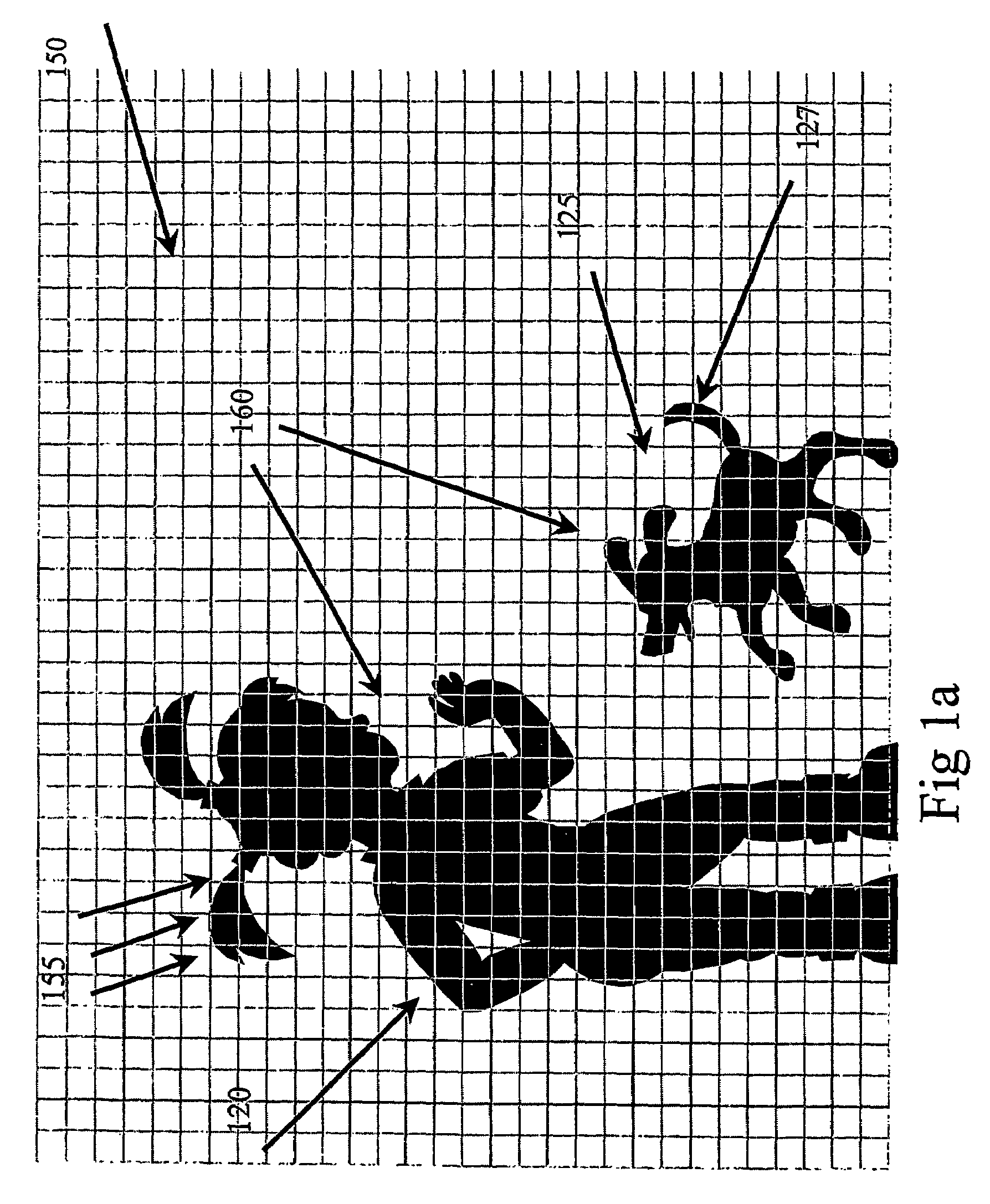Method and apparatus for a multisensor imaging and scene interpretation system to aid the visually impaired
a multi-sensor imaging and scene interpretation technology, applied in the field of visual impairment assistance, can solve the problems of not being able to product provides no assistance in physical step-by-step navigation, and cannot prevent a user from stepping off the curb into traffic, etc., to achieve the effect of enhancing communication concerning the environment, reducing the difficulty of visual impairment, and improving the accuracy of visual impairmen
- Summary
- Abstract
- Description
- Claims
- Application Information
AI Technical Summary
Benefits of technology
Problems solved by technology
Method used
Image
Examples
Embodiment Construction
[0045]Reference is now made to FIGS. 1-1a, which are respectively, a schematic spatial relation illustration 100 of a user / blind person 105 facing the field of vision 110, and a coordinate system, in accordance with an exemplary embodiment of the present invention. The height 112 of field of vision 110 is seen to be 3 meters and the width 114 at the far end is 7 meters at a depth 116 that is also 7 meters, but is no closer than a minimum depth 116. Two exemplary “objects”160 are shown, a girl 120 and a dog 125.
[0046]The system analyzes the surroundings according to the locality of anything present in the area within the boundaries, such as girl 120, dog 125, dog's tail 127 or the ground, walls, fence, building or treeline present in the area of field of vision 110, static or moving. The system locates exceptions in the surfaces within the boundaries: a decline or elevation in the ground, a protrusion or recess, an opening in a wall, etc. The system identifies and recognizes movement...
PUM
 Login to View More
Login to View More Abstract
Description
Claims
Application Information
 Login to View More
Login to View More - R&D
- Intellectual Property
- Life Sciences
- Materials
- Tech Scout
- Unparalleled Data Quality
- Higher Quality Content
- 60% Fewer Hallucinations
Browse by: Latest US Patents, China's latest patents, Technical Efficacy Thesaurus, Application Domain, Technology Topic, Popular Technical Reports.
© 2025 PatSnap. All rights reserved.Legal|Privacy policy|Modern Slavery Act Transparency Statement|Sitemap|About US| Contact US: help@patsnap.com



